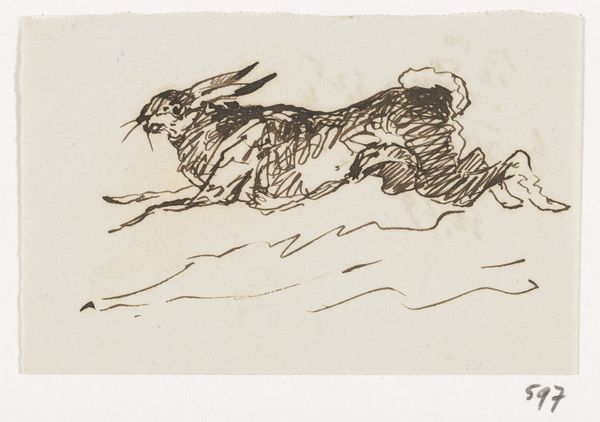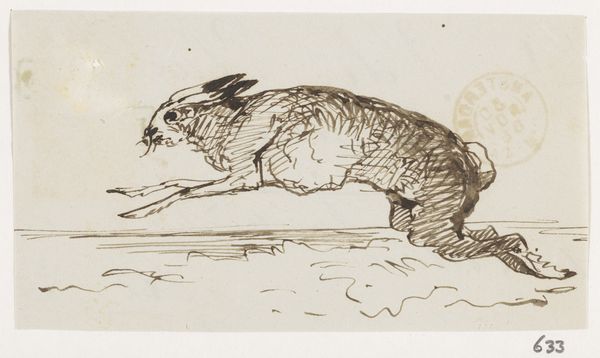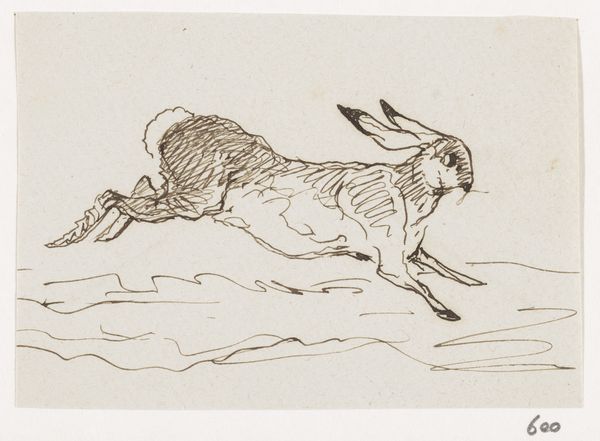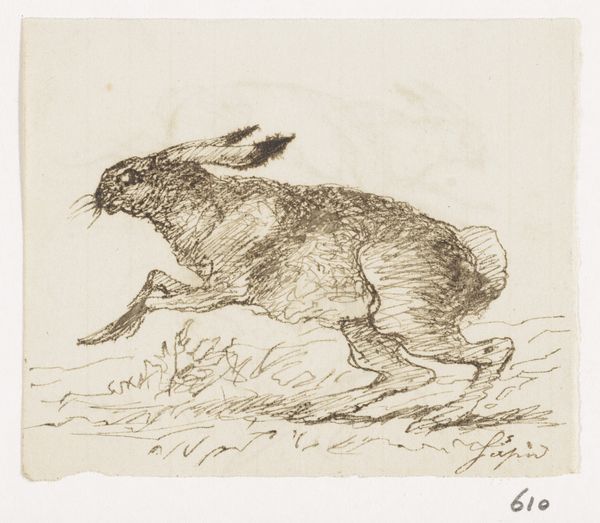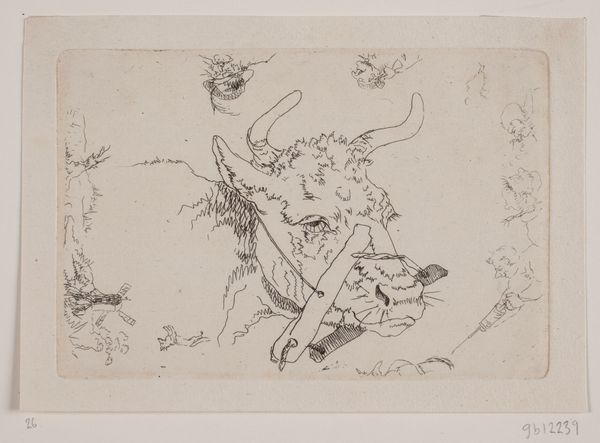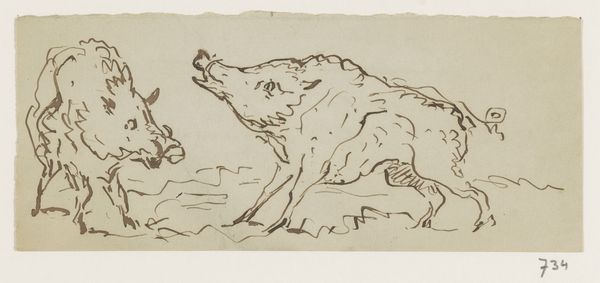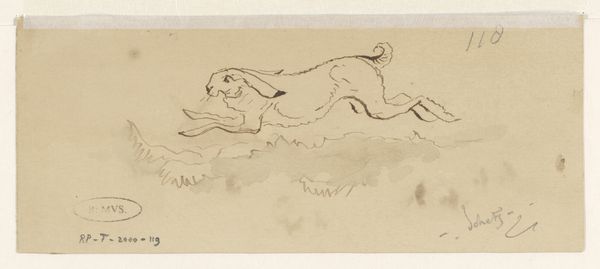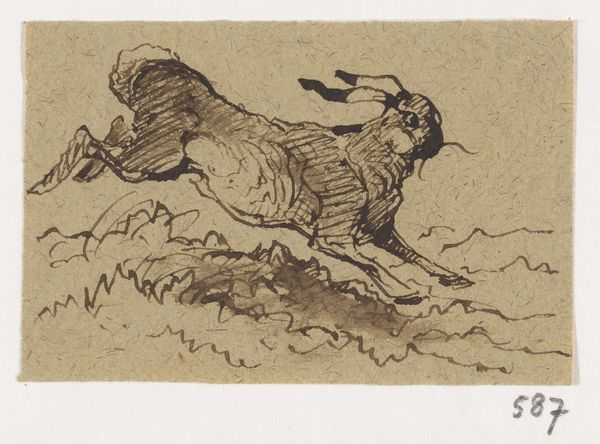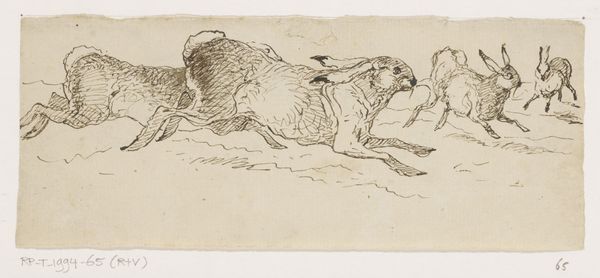
drawing, ink, pencil
#
drawing
#
quirky sketch
#
animal
#
pen sketch
#
incomplete sketchy
#
landscape
#
figuration
#
personal sketchbook
#
ink
#
sketchwork
#
ink drawing experimentation
#
pen-ink sketch
#
pencil
#
line
#
sketchbook drawing
#
sketchbook art
#
realism
#
initial sketch
Dimensions: height 40 mm, width 80 mm
Copyright: Rijks Museum: Open Domain
Editor: This is “Haas,” or “Hare,” a pen and ink drawing by Johannes Tavenraat, made sometime between 1840 and 1880. It’s currently held in the Rijksmuseum. It feels… unfinished. Like a fleeting thought captured on paper. What strikes you most about it? Curator: I see a raw vitality in this image. The hare, captured in mid-stride, is an archetypal symbol of alertness, swiftness, and even vulnerability. Hares often feature in folklore as tricksters or messengers, their fleeting appearances imbued with meaning. What does its dynamic, almost frantic energy suggest to you about its symbolic presence in Dutch visual culture during this time? Editor: I hadn’t considered the folklore aspect. I was focused on the sketch-like quality, almost like the artist was just practicing. Maybe its placement in a sketchbook indicates it's just that— practice! Curator: Perhaps, but even a quick sketch can tap into a deeper vein of cultural memory. Notice the cross-hatching, the almost frenetic lines – does this suggest anxiety or perhaps the thrill of the hunt so popularized within the 17th century? Editor: Now that you point it out, the frenetic energy you mentioned earlier feels more intentional, less accidental. Curator: Consider how our modern perspective influences our interpretation. What this imagery represented in the Netherlands in the mid-19th century might resonate differently today. Visual symbols are rarely fixed in their meaning. Editor: That’s a really good point. I think I'll start paying more attention to the potential symbolism behind seemingly simple subjects. Thanks! Curator: Indeed, looking beneath the surface, revealing layers of symbolism – it enriches our experience and understanding. A sketchbook becomes a story book!
Comments
No comments
Be the first to comment and join the conversation on the ultimate creative platform.
